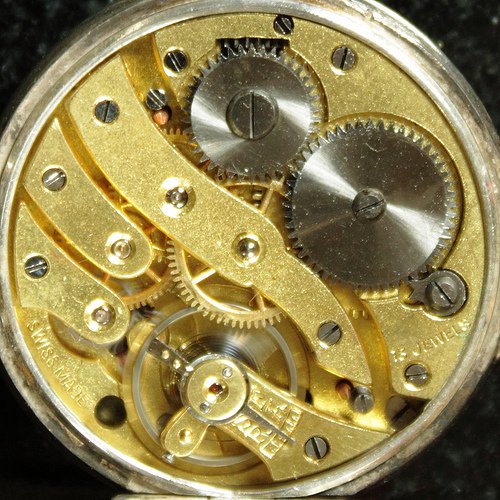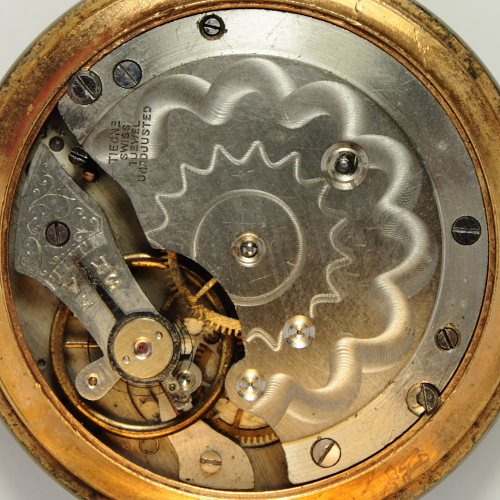Sometimes it takes putting words on the page to consolidate knowledge just as teaching forces you to deepen your knowledge of things which you ‘know,’ but in truth haven’t really explored fully.
Last week I identified a new bridge variant of the 202 calibre – what I have now numbered the 35

I came across this by pure chance on eBay as I happened to notice the M&S sponsor mark on the silver case hallmarkings. Taking the dial off and comparing to other calibres revealed the family – though it wasn’t a surprise as this seemed to be the start of M&ST doing it’s own hallmarking and I have a number of Delia marked watches (cal 202s) from the same date. Interestingly some of these run sub seconds and some don’t so that is a new marketing aspect I’ve not seen before.
To come back to the point however those Delias also carry the LTG logo on the calibres and this in 1921/21 is a few years after the merger. The question then is whether or not that was because of marketing or because those calibres were being made in the LTG factory (or both of course).
It brought my mind back to the Calibre 6 I mentioned in the last blog and the realisation that yes indeed these were LTG products and not M&ST designs – something I have resisted in my mind I guess. It also resolved a long running doubt I’ve had in my mind over a calibre that carries the Tieche mark (but there are several Tieches) but I had no LTG cylinder escapements to compare to (for a 6 with that mark see below). Now it seems obvious that the questionable movement is related to the 7 calibre.

Which brought my mind back to the varying shapes of the hairspring stud carriers. M&ST use the common triangle shape but a number of the lever calibres have a more rounded (pear shaped, teardrop?). Since the calibre above has that design it seems to me that this could be indicative of LTG design.
And with that here is the MST 6 with rounded stud carrier and the Tieche mark.
So how far does this theory take us? Well for a start there is the cal 157 – the earliest Roamer wristwatch calibre which we’ve been speculating could be the launch of M&STs first lever calibre.

Since it carries the rounded stud carrier it seems more and more likely to me that M&ST bought LTG for their lever expertise and that we can trace the lever technology to LTG and not to M&ST. I am now going to have to start retrawling through my database with this in mind and see where it leads. One thing that has become immediately obvious is the that the 157 and the 202 share a common design, especially around the keyless works. As a side not here I see that sometime in 1921 the set lever spring shape was redesigned on the 202 series to clear the dial foot hole better – something not needed on the 157 as the calibre is larger, but on the old design the relationship is clearer. Kris has commented on the similarity between keyless works in the past and going through my database I see the same designs cropping up – both this and the later redesign. I also see the two stud carrier shapes and now I’m going to have to start to question some of my date assumptions. One of the oddities of LTG is the lack of watches – now I’m starting to wonder that lack is a mistake on my part and if some of the watches in my collection I’ve assumed date into the Twenties in fact are a decade earlier. I guess we will have to wait for more evidence.
